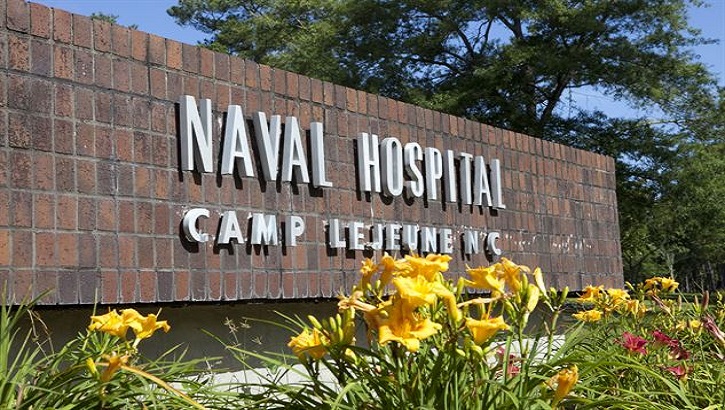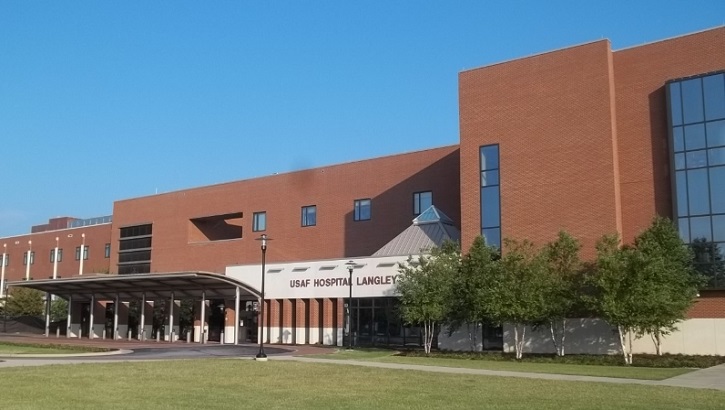
McCaffery announces upcoming changes to military hospitals, clinics

The Honorable Tom McCaffery emphasized DoD's priority is to focus on wartime readiness while ensuring continued beneficiary access to quality health care (DoD file photo)
The Department of Defense delivered a report to Congress on Feb. 19, 2020 that provides the DoD's plan to restructure 50 military hospitals and clinics. The report, titled "Restructuring and Realignment of Military Medical Treatment Facilities," was required by law under Section 703(d) of the National Defense Authorization Act of 2017, which directed the DoD to analyze its hospital and clinic footprint and submit a plan to Congressional defense committees.
The Honorable Tom McCaffery, DoD's assistant secretary of defense for health affairs, discussed these changes with members of the media. Below is his complete opening statement, with a link to the transcript of the question and answer session.
McCaffery emphasized DoD's priority is to focus on wartime readiness while ensuring continued beneficiary access to quality health care.
"The idea of the Military Health System needing to focus our MTFs on their core mission of military readiness is not a new one," McCaffery says in his opening statement. "It has been the subject of outside analysis, internal health system reviews, examination by senior civilian and uniformed leaders, and very importantly, by the Congress. We are fortunate to have robust civilian provider networks in many locations that offer timely access to quality health care. And so we have an obligation to deliver access to care for our patients, but also to focus precious military resources on activities with the highest readiness value."
The complete opening statement:
Thanks for all of you joining us this morning. I think as many or all of you know, the Military Health System is in the midst of implementing several significant reforms aimed to building a more integrated and effective system of readiness and health. The National Defense Authorization Act of FY 2017, directed the Department to assess our hospitals and clinics, and to make recommendations for restructuring those facilities to ensure they are focused on military and force readiness. We reviewed all facilities through the lens of their contributions to military readiness. That includes making sure MTFs are operated to ensure service members are medically ready to train and deploy. It also means MTFs are effectively utilized as platforms that enable our military medical personnel to acquire and maintain the clinical skills and experience that prepares them for deployment and support of combat operations around the world.
Today, we submitted the required report to Congress that outlines the results of our analysis, including plans for changes in a scope of operations at 50 facilities across the U.S. This report details the department's readiness focus for medical facilities, while maintaining our commitment to provide all beneficiaries with access to quality health care. I will describe some of the changes in a moment, but first I'd like to reaffirm that the Military Health System remains committed to ensuring access to quality health care for every beneficiary we serve. Additionally, nothing is changing immediately, and we intend to mobilize every resource available to help our beneficiaries and our staff navigate these changes. Our analysis demonstrates we need to adjust operations at 50 hospitals and clinics. The majority of the changes will be to outpatient clinics that currently are open to all beneficiaries, that we will modify to clinics for active duty service members only. These are the most significant changes for facilities and affect the largest number of our beneficiaries. Roughly 200,000 beneficiaries, currently empaneled for primary care at these MTFs will move over time into our TRICARE civilian provider networks.
Many are asking when these changes will be implemented. And, the short answer is, not right away. And that's because of how we intend to implement the changes. Before we transition any beneficiary from one of our hospitals or clinics, we will connect them with health care providers in our TRICARE network. And as you might expect, that process will take time. In fact, in several locations, with several MTFs, it could take several years for implementation.
The bottom line for our beneficiaries is that we will help guide them through every step of the enrollment change process when the time for action arrives. We will implement changes in a deliberate fashion at a pace local healthcare markets can handle.
Where are we making the changes? Later this morning, health.mil will publish a copy of the report that will include lists naming the changing facilities. I want to note a couple of important points about the report in this list. Our initial analysis indicated that of the 200 hundred-plus U.S.-based MTFs, 77 warranted a detailed assessment. That detailed assessment concluded that for 21 of these MTFs, their current scope of services should remain unchanged. That is for a variety of reasons, but most commonly, it is because our review indicated that the local civilian health care market did not, and likely could not, offer our beneficiaries appropriate access to health care. Thus, we are leaving these facilities open to all beneficiaries because of our commitment to military and veteran family access to quality health care. Second, you will notice several facilities listed as already in the process of changes. In some cases, locations have already completed a restructuring, not as a result of NDAA 2017 requirements, but because of previous decisions by the military departments. The Department’s analysis of these MTF’s readiness needs support those decisions.
Let me close by saying that the idea of the Military Health System needing to focus our MTFs on their core mission of military readiness is not a new one. It has been the subject of outside analysis, internal health system reviews, examination by senior civilian and uniformed leaders, and very importantly, by the Congress. But simply much of our daily work at many facilities, while vitally important to our beneficiaries, is less relevant to supporting readiness. We are fortunate to have robust civilian provider networks in many locations that offer timely access to quality health care. And so we have an obligation to deliver access to care for our patients, but also to focus precious military resources on activities with the highest readiness value.
We are aware that seeing new care providers may be a big change for families. The doctor-patient relationship is an important one. And we recognize the shift from MTF-based care to civilian care may involve new out-of-pocket costs for some retirees.
I want to make clear that we are taking a careful, deliberate approach as we assess the market capacity of each location to accept new patients. If we determine market capacity in a particular location is more constrained than we estimated, we will reassess our plans and adjust as necessary. The bottom line is we are committed to refocusing our hospitals and clinics on readiness, and we are committed to providing access to health care to our beneficiaries. I am confident that the Military Health System can accomplish both of those goals.
With me this morning is Dr. Dave Smith, who led the team comprised of individuals from Health Affairs, as well as the military departments and the Defense Health Agency. This team is the team that compiled information and conducted the analysis for plans, and he will be available to answer the questions about the process that we used, and the conclusions that we drew from that process and analysis.
I also want to acknowledge that General Place, the director of the Defense Health Agency, is here as well. General Place, at the DHA, oversees our US-based MTFs, as well as the TRICARE Health Plan. The DHA will be taking the lead role working with the military departments, the MTF leaders, installation commanders, and our network providers, on implementing the MTF-specific changes.
I also want to confirm that the change decisions that are reflected in the Report to Congress are made at a Department level, not at the Defense Health Agency. The changes in the report are not a result of DHA’s new responsibility for managing the MTFs which was another directive coming from Congress as part of NDAA 2017. That said, it is going to be DHA’s responsibility to, again, work with the military departments, our providers in the local communities, to plan and execute the detailed implementation plans at the MTF and market level. As the DHA collaborates on these plans, they will work with our managed care support contractors to help communicate details for each effective person when a time for action arrives. Until then, normal operations at these facilities will continue.
The health system is committed to maximum transparency at every step in this process. It's our priority to help approximately 200,000 out of the over 9 million beneficiaries who will be affected by these changes to retain uninterrupted access to health care as we help transition them to new providers. Again, I appreciate you carving out time this morning, and we are happy to answer any questions you may have.
Department Of Defense Health Affairs Media Roundtable Announcement of NDAA 2017, Section 703(d) Report to Congress
Congressional Testimony
2/19/2020
Thomas McCaffery, Assistant Secretary Of Defense For Health Affairs; Dr. David Smith, Reform Leader For Health Care Management; and Lieutenant General Ronald Place, Director, Defense Health Agency, participated in a Health Affairs Media Roundtable following the announcement that the NDAA 2017, Section 703(d) Report was submitted to Congress.
DoD to restructure 50 hospitals, clinics to improve readiness
Article
2/19/2020

The restructuring effort focused on strengthening the prime responsibility of military medical facilities for training medical personnel
Careful, deliberate changes ahead for select MTFs
Article
2/19/2020

The DoD’s top health official shared plans to restructure 50 military hospitals and clinics, emphasizing changes will prioritize the warfighter and force readiness
Naval Branch Health Clinic (BHC) Earle Vol 1
Report
2/18/2020
The table below summarizes the findings and data informing the decision on the future of the Military Medical Treatment Facility (MTF).
Branch Health Clinic (BHC) Colts Neck Earle Vol 2
Report
2/18/2020
The table below summarizes the findings and data informing the decision on the future of the Military Medical Treatment Facility (MTF).
Russell Collier Health Clinic, Charles Thomas Moore Health Clinic, Building 36000 Vol 1
Report
2/18/2020
The table below summarizes the findings and data informing the decision on the future of the Military Medical Treatment Facility (MTF).
Naval Branch Health Clinic (BHC) Earle Vol 2
Report
2/18/2020
The table below summarizes the findings and data informing the decision on the future of the Military Medical Treatment Facility (MTF).
Russell Collier Health Clinic, Charles Thomas Moore Health Clinic, Building 36000 Vol 2
Report
2/18/2020
The table below summarizes the findings and data informing the decision on the future of the Military Medical Treatment Facility (MTF).
Farrelly Health Clinic (FHC) Vol 1
Report
2/18/2020
The table below summarizes the findings and data informing the decision on the future of the Military Medical Treatment Facility (MTF).
Naval Health Clinic Corpus Christi Vol 1
Report
2/18/2020
The table below summarizes the findings and data informing the decision on the future of the Military Medical Treatment Facility (MTF).
Farrelly Health Clinic (FHC) Vol 2
Report
2/18/2020
The table below summarizes the findings and data informing the decision on the future of the Military Medical Treatment Facility (MTF).
Fillmore Army Health Clinic (AHC) Vol 1
Report
2/18/2020
The table below summarizes the findings and data informing the decision on the future of the Military Medical Treatment Facility (MTF).
Naval Health Clinic Corpus Christi Vol 2
Report
2/18/2020
The table below summarizes the findings and data informing the decision on the future of the Military Medical Treatment Facility (MTF).
Fillmore Army Health Clinic (AHC) Vol 2
Report
2/18/2020
The table below summarizes the findings and data informing the decision on the future of the Military Medical Treatment Facility (MTF).
Naval Branch Health Clinic (NBHC) Dahlgren Vol 1
Report
2/18/2020
The table below summarizes the findings and data informing the decision on the future of the Military Medical Treatment Facility (MTF).





















.png)









No hay comentarios:
Publicar un comentario